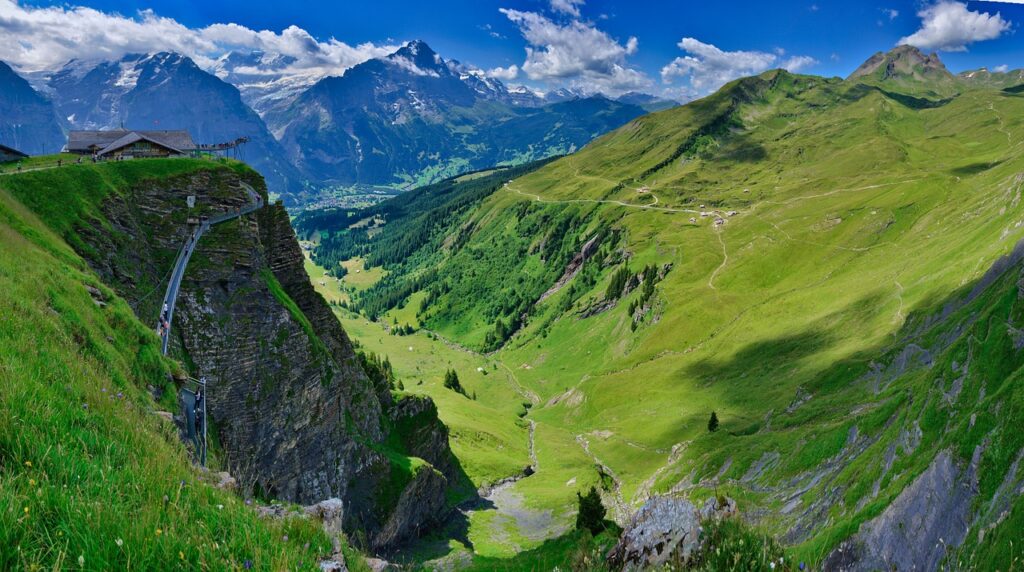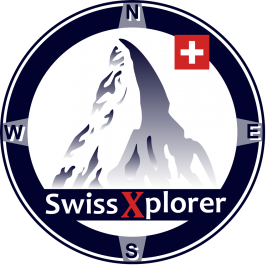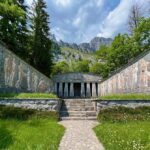Hiking in Switzerland – Best trails and views

Discover Switzerland’s finest hiking trails! In this ultimate travel guide, we’ve gathered everything you need to know about hiking in this beautiful country. Switzerland is renowned for its breathtaking landscapes, and what better way to explore the country than by embarking on a hike in the land of the Alps? Whether you’re planning a trip or already traveling through Switzerland, including a mountain hike in your itinerary is a must. It’s undoubtedly one of the best ways to immerse yourself in the stunning scenery. Our guide features the top hiking trails in Switzerland, catering to all levels of experience.
All the trails are well-marked and safe, making them accessible without a guide. However, if you prefer expert mountain guidance, we can assist you! With our extensive knowledge in trail exploration, we can provide a customized private hiking tour just for you. Just click here to get in touch!
About the Trails and Routes:
Hiking is a democratic sport, and did you know that over four in ten Swiss people consider themselves active hikers?
With 65,000 km of marked trails (half of which are paths through fields and forests), Switzerland offers options for every taste. It’s even enshrined in the Swiss constitution that Swiss trails should be maintained in good safety conditions. Maintenance is carried out at both the state and municipal levels, with around 1,500 volunteers involved in tasks such as clearing vegetation, repairing stairs, and adjusting signage. The Alpine Club, a sports association, also invests thousands of francs annually to maintain and improve access to cabins and shelters for hikers.

Our Selection of Trails:
We’ve curated an exclusive selection of trails to cater to all types of hikers, including beginners who prefer shorter hikes without the need for camping gear.
And if none of these trails are close to your accommodation, worry not! Switzerland offers countless mountain options in practically every city, as hiking is a popular sport enjoyed by all.
In our exclusive trail selection, the primary criterion for choosing these trails was their natural beauty along the route. We’ve highlighted the most scenic locations in the country for this activity.
Most of the trails in our selection are located high in the mountains, requiring vertical transportation such as cable cars, funiculars, or gondolas to access them. Please check the price and opening times for each option.


To make it easier for you, we’ve divided our list by difficulty level: Easy, Intermediate, and Advanced. Each level includes at least three of our favorite trails. Check them out below:
Easy Level:
Easy level trails are ideal for those with children or for those who prefer shorter walks. These trails are marked with yellow signs or arrows, often depicting a figure with a backpack and walking stick. The altitude and distance markers on these trails are also yellow and can indicate different types of paths. They provide an estimate of the time it should take to reach nearby points of interest, including train stations and bus stops.
Blausee Lake – 1 km – 15 min
Aare Gorge – 1.4 km – 40 min
Caumasee Lake – 1.5 km – 17 min
Oeschinensee Lake – 1.6 km – 19 min (requires cable car)
Gelmersee Lake – 4.7 km – 2 hours (requires funicular)
Intermediate Level:
Intermediate level trails are recommended for those who are already accustomed to walking and have a good level of physical fitness. Red and white signs, often painted on rocks, mark trails where hikers can expect steep and narrow passages. Users should feel secure, not suffer from vertigo, be in good physical condition, and be aware of the dangers of the mountains.
Klingestock to Fronalpstock – 4.5 km – 4h30min (requires funicular)
Trift Bridge – 2.8 km – 3 hours (requires cable car)
Bachalpsee – 3 km – 45 min (requires cable car)
5 Lakes Trail in Zermatt – 9 km – 2h30min (requires funicular)
Advanced Level:
Alpine hiking trails are marked with blue and white signs. These trails often cross snowfields and glaciers and may require some climbing with ropes, ice axes, and crampons. With the melting of glaciers, these trails are becoming more challenging. High-difficulty level trails are recommended for those who have extensive experience in the sport.
Pizol’s 5 Lakes – 11.4 km – 5 hours (requires cable car)
3 Lakes Trail in Appenzell – 17.4 km – 7h30min
Gletscherweg Aletsch – 12 km – 3h45min (requires cable car)
Best Time for Hiking in Switzerland:
Although it is also possible to hike in Switzerland during winter with snowshoes, we’ll leave that topic for another post. The trails selected here are ideal for exploration during the summer season, which spans from June to September. In April and May, you’ll experience spring and witness the blooming of many flowers along the way. September and October are also great months to hike, as you can admire the autumn colors with reddish leaves. However, prepare for cold weather during both spring and autumn.
On the Official Tourism website of Switzerland, you can find a selection of the country’s 32 most enjoyable hikes. On this website, you can filter by duration, season, and other criteria. Click here to view!
Weather Forecast:
Always double-check the weather before setting off, as rain can result in slippery rocks. The national meteorological service, MeteoSwiss, provides detailed forecasts, including danger warnings such as strong winds or avalanches. You can check if your destination is shrouded in fog by watching videos from webcams near cable cars or mountain huts. While local authorities block trails once they become aware of any issues, it’s important to note that due to glacier melting, cracks in slopes can pose a danger. Therefore, make sure to choose a safe trail.
To assist you, we have compiled three websites where you can find more information about trails:
Switzerland is waiting to be discovered! Don’t miss the unique experience of beholding Europe’s most famous mountain range.



